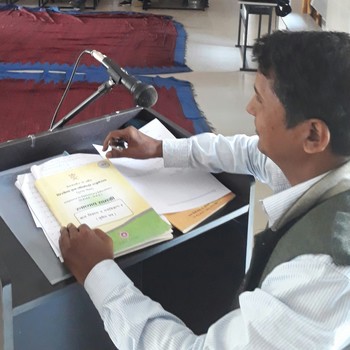Question #d625f
1 Answer
Oct 2, 2017
They form hydrogen bonds.
A pairs with T
G pairs with C
Explanation:
- The nitrogenous bases i.e., adenine, guanine, thymine and cytosine of the two strands are joined by hydrogen bonds and form two complementary strands to form DNA.
- Adenine joins with thymine and guanine joins with cytosine with two and three hydrogen bonds, respectively. Thank you
Here is a video which describes how the base paring rules are important during the process of DNA replication.


